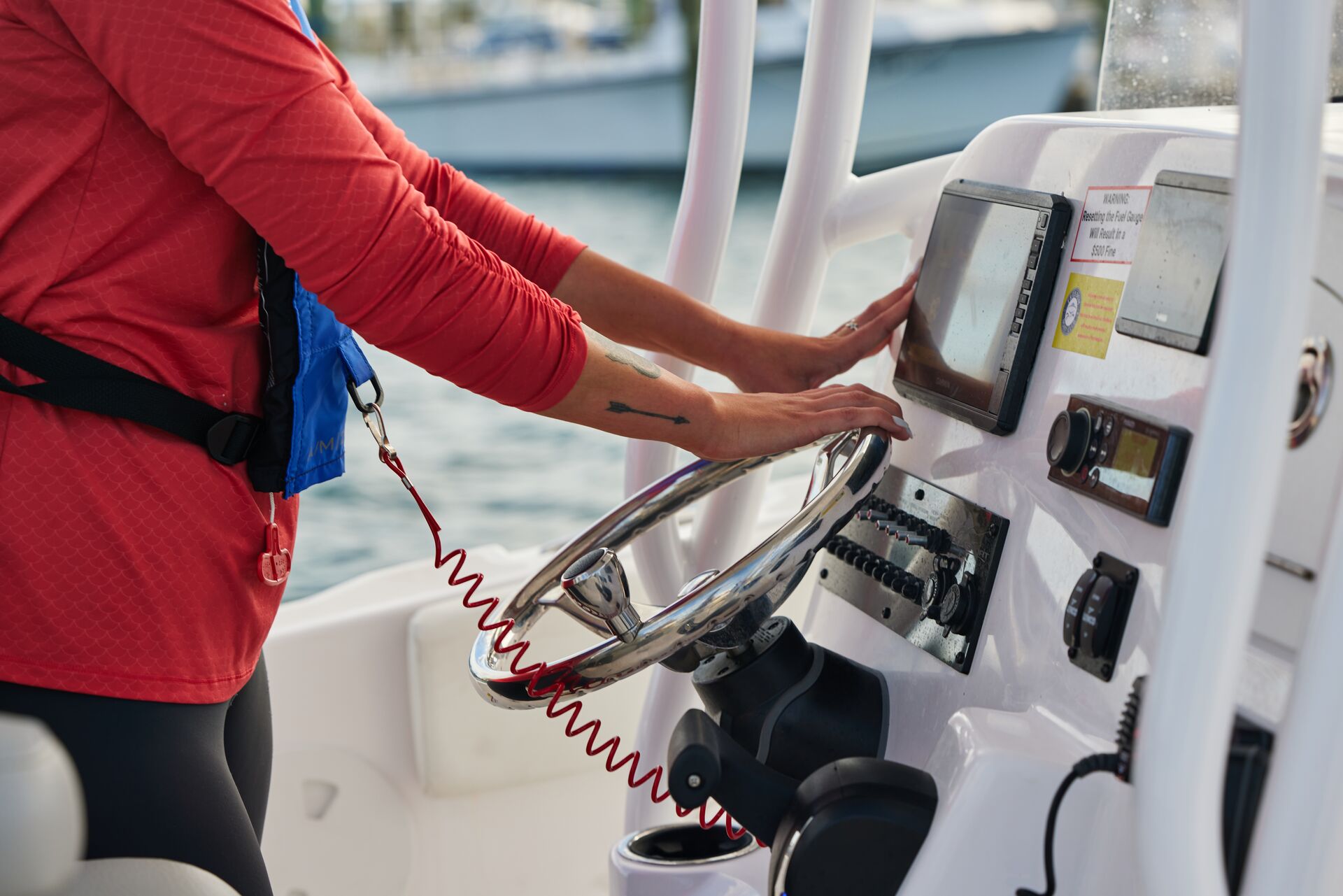What Is the Helm of a Boat?

Safe boating requires plenty of knowledge, including understanding the parts of a boat and what they do. Knowing how your boat functions and what different parts do can help you be more prepared for bad weather, know how to avoid an accident or injury, have the proper safety equipment, and feel more confident out on the water.
So, how well do you know your boat? Do you know where the helm is?
Here's what to know about the helm of a boat and how it works, along with the different types of helms and why they're so important. The more you learn, the more you'll be ready for your next boating adventure.

What Is the Helm of a Boat?
The helm is where you'll find all the steering and controls. It's essentially the command center, where the pilot or captain of the boat maneuvers the vessel.
If you're a boat operator on the waterways, you should be at the helm anytime the boat is in motion.
The primary function of the helm is to control the boat's direction. That's usually done through a tiller or a steering wheel, depending on the type and size of the boat you have. Also located in the helm is a throttle speed control, navigation equipment, and instrumentation.
The Components of the Helm
The helm has several specific components, each essential in boating and navigating safely.
Steering Mechanism
This could be either a traditional steering wheel like you'd find in a car, or it may be a tiller instead.
A tiller is a lever to turn the boat's rudder. The kind of boat you have, its age, size, and other specifics will all factor into which type of steering mechanism your boat uses.
Throttle and Gear Controls
These controls manage the boat's speed and the engagement of gears (forward, reverse, and neutral). They allow you to slow the boat in tighter spaces or no-wake zones and speed up on the open water, as well as idling, backing the boat up to the dock, or turning around.
Instrumentation Panel
The instrument panel at the helm of a boat displays information such as engine RPM, speed, fuel levels, and navigation charts. Some boats have much larger instrument panels and provide more data than others.
Navigation Equipment
The navigational equipment includes GPS, depth finders, radar, and other devices that help you travel safely. If you spend a lot of time fishing, you might also have a fish finder in the helm.

Communication Devices
Communicating with others is essential while you're on your boat. Your helm should have a radio and other communication tools, allowing you to contact marinas and other vessels in your area.
What Are the Types of Helms?
There are two common types of helms: single and dual.
Single helms are generally found on smaller boats, while dual helms are more likely on larger vessels and yachts.
Having a dual helm helps provide better visibility and control from different areas of the boat. However, there are also a couple of other types of helms to know about.
Flybridge Helm
Some boats have a second helm station on an elevated platform called a flybridge. This offers a higher vantage point for better visibility and can help with navigation.
Center Console Helm
This helm is centrally located on center console boats. It provides balanced visibility and control, making seeing around the boat from a middle vantage point easier.

The Importance of Helm Location
The helm location is essential for several reasons. Two of the most significant reasons are visibility and safety because the correct location allows the vessel's operator to navigate safely and avoid obstacles.
Another reason is ergonomics. The layout and accessibility of controls at the helm are designed for comfort and ease of use, helping to reduce operator fatigue.
Stay Alert When Operating the Helm
There's a learning curve to operating the helm of a boat. It requires skill and knowledge, including how to steer, accelerate, and decelerate effectively. Taking time to learn all these things is very important because the person at the helm is responsible for the safety of everyone on board.
Operating the helm is one of the most critical roles on a boat and must be taken seriously. When you're at the wheel, you need to be alert, aware, and prepared, which comes with a good understanding of proper helm operations.
Maintaining the Helm
The components on the helm of a boat must be checked and maintained regularly to ensure they're functioning correctly. That includes the steering system, electronics, and other controls.
Checking these parts periodically is a great way to catch a problem before it becomes more serious, so you reduce the risk of having an issue while out on the water.
There are also options to upgrade and customize your helm with new steering wheels, advanced navigation systems, and enhanced comfort features. These updates can make spending time on your boat even better and more fulfilling and may also help keep you and your passengers safer.

Stay Safe at the Helm With Boater Education
Before you head out on your boat, it's essential to make sure you're fully prepared for the responsibility of being at the helm of a boat. You can do that by taking a boater education course through Boat-Ed to learn more about staying safe on the water and enjoying your boat to the fullest.
Our courses are online, easy to navigate, and informative. They also meet the requirements for safety education in your state!
So, before you take the wheel of a boat, start the course for your state and learn about safety, navigation, right-of-way, and more!



